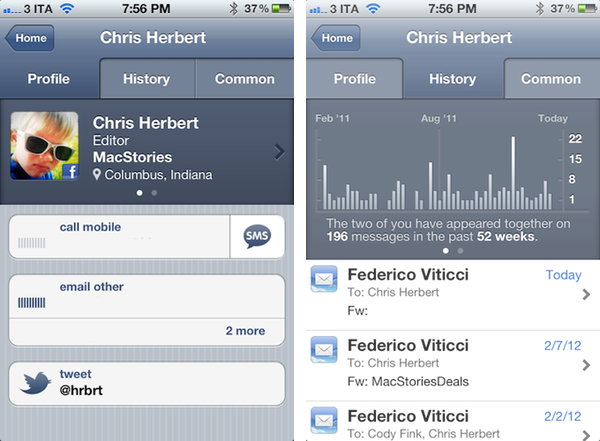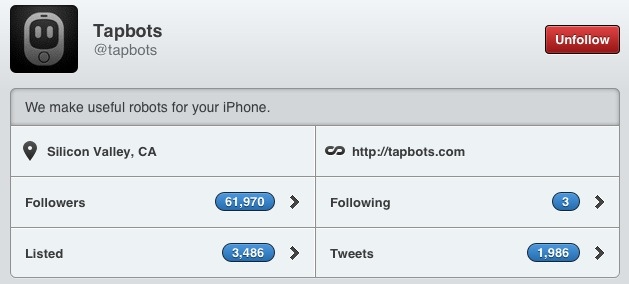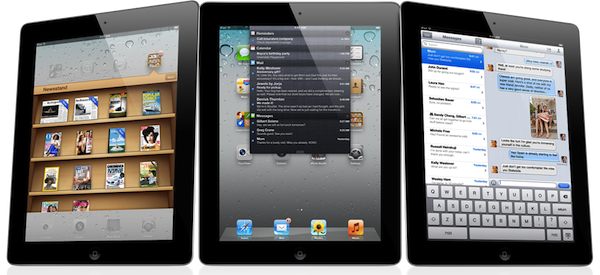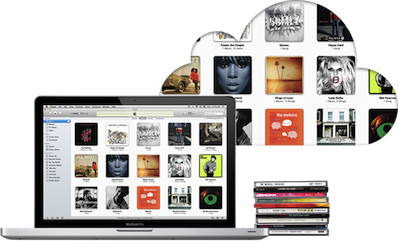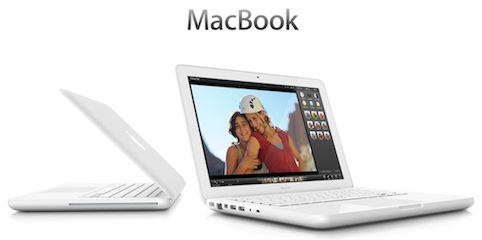Valentine’s Day deals are rolling in! Here are today’s @MacStoriesDeals on iOS, Mac, and Mac App Store apps that are on sale for a limited time, so get them before they end!
#MacStoriesDeals - Friday
“Okay, I’ll Remind You”
A few minutes ago Apple uploaded two new iPhone 4S commercials on its website and official YouTube channel. The ads, as with previous iPhone 4S promotional videos, focus on Siri, and they might just be the best ones about the voice-based assistant yet.
The ads, called “Rock God” and “Road Trip”, share a common theme: people talking to their assistant using natural language and a friendly tone, not simply asking a piece of software to execute commands.
In Road Trip, a guy and his girlfriend are organizing a road trip to California. Look at the initial setting: it’s cold outside, they’re about the get in the car, and they want to get from the cold of East Coast in February to the sunny Santa Cruz in California. The guy asks Siri, and they’re on the road. Camera cuts to the guy’s face in the car. He’s looking for a barbecue in Kansas City. Camera cuts to girl’s face in the car. She’s looking for a rodeo. Camera changes again, this time the couple doesn’t know where they are, and the girl asks “Where are we?”, with the look of someone who knows Siri will have an answer. They’re in Santa Rosa. Change again. How big is the Grand Canyon? Sure enough, Siri can look that up on Wolfram Alpha or Wikipedia. But then the gas runs out: how about finding a station the guys can walk to? Finally, the ad reaches its climax when our two characters have seemingly reached their destination, or are fairly close, and are looking at the stars. She asks: “What does Orion look like?”. Siri displays sky data inline. The video closes with the opposite setting of how it began: sunny California, he’s wearing a t-shirt, looking at the horizon, and she’s telling Siri like you would do with an old friend – Remind me to do this again. Siri, with its human-like voice, replies: Okay, I’ll remind you.
The second commercial, Rock God, has a more “fun” approach. There’s this kid that “has to get a guitar”, and he’s so excited about it he needs to ask Siri now. Why is he so excited about getting a guitar? What’s the story here? Perhaps, I imagine, he has just decided with his friends that it’s time to put a band together and start playing. So, Siri gives him location info about stores selling musical instruments, and in the next scene our kid is learning how to play. How do I play London Calling? Whole Lotta Love? How about that chord? Siri displays information on screen. Fairly regular stuff for now. Then the ad changes – our character is sending a message to Julie and Kate about playing at the garage tonight. Apple’s music stops. The kids are playing – they’re doing rock ‘n’ roll! – and finish their song. “Call me Rock God”, the kid tells Siri, softly.
You see, these aren’t just ads. In 30 seconds, we’re told stories. In 30 seconds, we are not shown technical features and RAM specifications, we’re given real examples of real people we can relate to. We’re shown two young people in love with each other that just want to get to California and see the sunset together. We’re shown a young boy with a simple dream, playing guitar, yet a dream that’s important to him – something that makes his life worth living and enjoying even for those 30 minutes when he gets his band mates together and nothing else matters. Just music. Call me Rock God.
In 30 seconds, we’re shown how technology can make people’s lives better. We’re reminded, once again, that this industry, this love for the latest gadget, doesn’t necessarily have to be about tech specs – it’s the technology married with the liberal arts. It’s about playing London Calling with your friends. It’s about driving to California with the woman you love and watch the stars just for one night.
He would be proud.
Smartr Contacts
Sometime in the past five years, the Address Book got social. Our contact cards suddenly gained Twitter handles and Facebook links, whilst users more oriented towards business relationships decided to add their LinkedIn pages alongside standard phone numbers and email addresses. More importantly, the Address Book became mobile: adding a new entry to the Contacts app on our iPhones pretty much equals to exchanging business cards now and, unsurprisingly, a new category of apps has arisen from the need of turning old cards into digital reinterpretations of that paper stack full of contacts we’d keep on our desk, but never properly organize.
From this premise, Xobni (that’s Inbox spelled backwards), makers of a popular email plugin for Outlook and Gmail, released Smartr for iPhone a few weeks ago on the App Store. Developed as a mobile companion to Xobni on the desktop, Smartr leverages all the features made possible by a digital interface (search, social integration, slick design, APIs) to provide you with a social address book that’s always up to date and keeps tracks of your communication with friends, family, and work contacts over time. It is very smart indeed.
Smartr basically creates rich profiles for all your contacts, aggregating data from Twitter, Facebook, LinkedIn, and email to form a complete overview of someone you might have communicated with in the past. In pulling this data from various social networks, Smartr uses its proprietary matching technology (the “Xobni Cloud”) to analyze and compare your contacts (from your Address Book, an interesting subject following Path’s recent PR fiasco) against conversation history from email (Gmail is fully supported), usernames from Twitter and Facebook, status updates, and so forth. Once a contact is matched, a rich profile view is created featuring name, photo, phone number, and email addresses. Smartr even allows you to swipe across the top section of a profile view to switch between a person’s various social profiles, which upon tap will correctly launch the official Twitter and Facebook apps (if installed).
But what to do with these rich, automatic and integrated profiles? Well, Smartr is largely focused on search, unlike, say, a tool like Friends that’s more geared towards interacting with people from your Address Book found on other social networks. Smartr’s prominent interface element is, in fact, a search box that lets you look up contacts by name, company, title, or email. I wish the app supported @username-based look-ups, as I might remember exchanging a message or two with @hrbrt, but I can’t recall his full name from further email communications. Smartr is fast: Searching more than 6,000 contacts on my iPhone takes seconds and the information is always up to date, as Smartr is also web-based in that Xobni’s servers are constantly analyzing and matching your contacts to provide the best results. You can read more about Xobni’s privacy policy here.
Once you’ve found a contact (I managed to retrieve contact information and conversation history from messages dating back to 2008), you can interact with the profile view to compose new emails, call a phone number, or send a new message. The History tab in the top toolbar will give you access to a nicely designed graph showing how many times you’ve appeared in a conversation with a contact, with the actual messages listed below and available for inline viewing if the associated email address is also configured in Smartr (the app will use the standard iOS mail view to enable this). The third tab, Common, shows a list of common contacts between you and the contact you previously looked up.
Smartr is very fast, reliably accurate, and has proven to be a nice addition to my workflow, especially for those times I want to look up an old contact (typically developers) that I want to get in touch with again. I wouldn’t mind paying for Smartr, but the app is free, and available on the App Store. If mail integration is your thing, make sure to check out Xobni’s popular Gmail plugin as well.
#MacStoriesDeals - Thursday
Here are today’s @MacStoriesDeals on iOS, Mac, and Mac App Store apps that are on sale for a limited time, so get them before they end!
Interview: Tapbots’ Paul Haddad Talks Tweetbot for iPad Launch
Following yesterday’s release of Tweetbot 2.0 for iPhone and Tweetbot for iPad (our reviews here and here, more coverage here), I was able to chat with Tapbots’ co-founder Paul Haddad (@tapbot_paul) about the launch of their first “real” iPad app, the reception of Tweetbot 2.0 for iPhone, and the iPad App Store.
Check out the interview below.
MCSTR: Hi Paul, congratulations again on the launch of Tweetbot 2.0 and Tweetbot for iPad. So how did yesterday go in terms of sales? Was the launch as successful as you hoped?
PH: Yeah I was surprised we hit #1 in the iPad App Store so fast, I was hoping we’d hit it at some point but wasn’t expecting it to happen in 8 hours. It was pretty fast – the Top Paid is a moving average over what I think is 3 days, so to do it in less than one is pretty amazing.
MCSTR: I mean, it’s not easy for a social networking app priced at $2.99 to get the first spot over games and utilities (most of them sold at $0.99), right?
PH: At least in the US I think the iPad market is certainly different than iPhone, not as heavily skewed towards the $.99 games/apps.
MCSTR: Do you think with the current number of downloads you can stay on #1 for many days?
PH: I hope so, but don’t really have any idea. The iPad App Store is virgin territory for us so we don’t have many set expectations both in the short and long term.
I will say that yesterday was our second biggest day ever in terms of revenue.
MCSTR: Nice. I guess your biggest day ever was Tweetbot for iPhone launch? Or perhaps that Tweetbot sale you had last year?
PH: Tweetbot for iPhone launch was the biggest day, but that was also a full day Vs more or less a half day, so who knows what will happen today.
MCSTR: Yeah, it seems you guys are still #1 in the US Store, so that’s promising. Besides the rave reviews, how has general reception been?
PH: Surprisingly good. It’s really hard to gauge these things pre-launch and we’re too close to the app to really get a feel for what other people will think of it. There certainly was a concern that people would dislike the idea of it being a separate app. But there have been very few complaints about that.
Since it was our first large iPad app, I was also worried that people would feel our style wouldn’t translate well on the device. But again – overwhelmingly positive responses.
MCSTR: How about Tweetbot 2.0? Obviously the iPad launch was bigger because it was a completely new app, but Tweetbot 2.0 is pretty sweet too.
PH: It was really cool to be able to do both at the same time. I think Tweetbot 2.0 answers a lot of the criticisms folks have had with the app, while still making it feel like Tweetbot. I’m really happy that we were able to make it look and perform better at the same time.
MCSTR: The obvious question is – now that we have two Tweetbots, will we get to see some sort of iCloud integration between them?
PH: We don’t generally talk about future features because we don’t really know how long things will take, or even if things are possible. I will say it’s one of the things we are looking at.
MCSTR: Sounds good. Last question: Is there anything you would have done differently in Tweetbot 1.0 for iPad?
PH: I’m really happy with the way Tweetbot 1.0 came out. We actually have a very strong set of features planned out for the near future that will make it even cooler. But 1.0 is exactly what we wanted it to be, the best Twitter app for iPad and a solid base to grow from.
All Things D: Apple Will Announce iPad 3 In Early March
The typically reliable John Paczkowski at All Things D is claiming this morning that Apple’s next iPad, so far unofficially dubbed the iPad 3, will be announced by Apple at a media event in San Francisco in the first week of March. This rumor, if true, will follow last year’s announcement timeframe – the iPad 2 was unveiled on March 2, and went on sale on March 11 in the United States.
Sources say the company has chosen the first week in March to debut the successor to the iPad 2 and will do so at one of its trademark special events. The event will be held in San Francisco, presumably at the Yerba Buena Center for the Arts, Apple’s preferred location for big announcements like these. No word yet on a street date for the iPad 3 (assuming that’s what it’s called), though my guess is retail availability will follow roughly the same schedule as that of the iPad 2: available for purchase a week or so after the event.
In his story, Paczkowski reiterates previous rumors of a device sharing roughly the same form factor of the iPad 2, only carrying a higher resolution display, possibly a “Retina” one with 2048 x 1536 pixels of resolution. This is not the first time a major publication has weighed in to speculate on the features and release date of the next-generation iPad: back in January, a Bloomberg report claimed that the iPad 3 would feature LTE, a Retina Display, and a quad-core Apple-branded processor to power the device’s higher resolution screen. As for other rumors surrounding the device, it’s been speculated that the iPad 3 would be slightly thicker than the iPad 2 to accomodate a bigger battery and different display, with parts floating around China suggesting that the increase in thickness should be around 1 millimiter. Other parts have surfaced as well among Chinese retailers, albeit they simply don’t offer any insight into the possible functionalities of the new iPad.
All Things D has been a very reliable source of Apple information in the past, correctly predicting the iPhone 4S’ October launch and Apple education event of January 2012.
Greed and Entitlements
Nate Boateng has published a very good explanation of why App Store users aren’t entitled to free, universal upgrades of iOS apps:
The thought that a small development team is expected to do months work for free is insane to me. Yes, there are tons of successful apps that are universal (see Instapaper, Due, and Twitteriffic), but the perception that we are entitled to that is not only selfish, it’s just plain wrong. Universal app updates that come for free should be considered a bonus, not a right. A while back Iconfactory developer Craig Hockenberry gave a ballpark on Twitteriffic’s development. He estimated that it cost around $250,000 to develop Twitterrific. Think about that for a second. Still think you’re entitled to free universal updates for the lifetime of an app? I sure don’t.
Today’s Tweetbot releases are just another example of a subset of users that think developers should keep on updating their apps, even adding completely new iPad versions, for free, forever. This kind of controversy seems to take place every time a major iPhone app is released as standalone on the iPad, or vice versa. So I’d like to formulate a quick thought on the subject.
I understand those who say “I would have preferred it to be universal”. Sure, sounds reasonable. I would have preferred my iPhone 4S to come for free in the mail, too, but it didn’t. Stuff isn’t free in this world (even when they give you the illusion of free, you’re the one being sold). What I can’t accept is people getting angry and offensive at third-party developers that decide, you know, to make people pay three bucks for an app that’s been in the works for months. Unfortunately, the App Store doesn’t allow for paid upgrades, so if these people’s rhetoric is that it’s not about the price, it’s about the convenience of a universal binary, well, there isn’t much developers can do about it. Ask Apple.
More importantly, I’m baffled when I see people really getting angry because of a standalone app that was always meant to be that way. So here’s a tip for these people: next time you’re about to send a tweet to a developer, claiming that he promised a free and universal update and he’s now “stealing your money”, do your homework. Because if I can’t argue on economics, I sure think I’m pretty good at Google Search, which brought me to this page (screenshot). From the old Tweetbot FAQ, when the iPhone app was first released in 2011:
Will there be an iPad/Mac version?
It’s a possibility, but we have no plans for it at this time. We are focusing on the iPhone version for now. If we do an iPad version, it will not be universal.
Don’t be greedy. Support indie developers and great software.
The Magic Money That Apple Made From Thin Air→
The Magic Money That Apple Made From Thin Air
Jeff Price of TuneCore is happy and a little surprised, finding out their first royalty payments from the new iTunes Match came in at $10,000. He writes in a blog post that “this is magic money that Apple made exist out of thin air for copyright holders”. The service has effectively monetized the existing behaviour of consumers, giving more money to artists and copyright holders whilst the consumer just continues to listen to their music, not doing anything “new”.
A person has a song on her computer hard drive. She clicks on the song and plays it. No one is getting paid. The same person pays iTunes $25 for iMatch. She now clicks on the same song and plays it through her iMatch service. Copyright holders get paid. Same action, same song, one makes money for the copyright holder, and one does not. This is found money that the copyright holders would never have gotten otherwise.
It may not be a complete windfall as Jeff points out, but it has something - something that if iTunes Match didn’t exist, you wouldn’t get at all. Something is better than nothing.
The music industry needs innovation. Services like iMatch, Spotify, Simfy, Deezer and others are bringing that innovation—it will take some time to learn which are the ones consumers want. But in the interim, seeing an additional $10,000+ appear out of the thin air for TuneCore Artists by people just listening to songs they already own is amazing!
Apple’s White MacBook Reaches “End Of Life”, Educational Sales To Stop
Several months after halting sales of the white MacBook to consumers, Apple is now completely stopping sales of the MacBook. When it stopped selling the entry-level MacBook to consumers back in July of last year, Apple continued to offer it to educational institutions, but it has now notified resellers that it has now classified the MacBook as “End of Life”.
With that MacBook now discontinued entirely, Apple’s laptop lines include just the MacBook Pro and MacBook Air models. It isn’t known when Apple stopped manufacturing of the MacBook, but it was likely a few weeks ago, with Apple just waiting for final supplies to dwindle down.
[via MacRumors]




